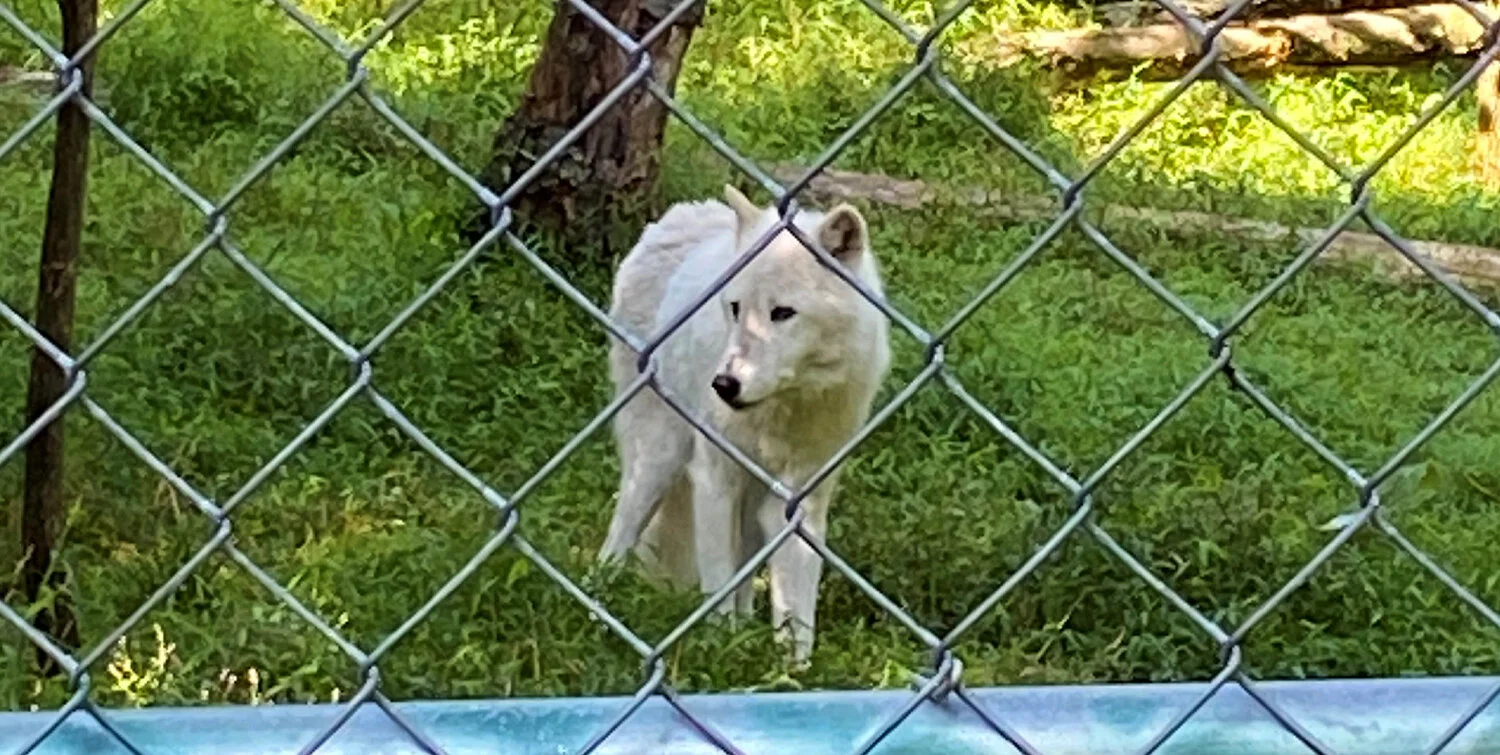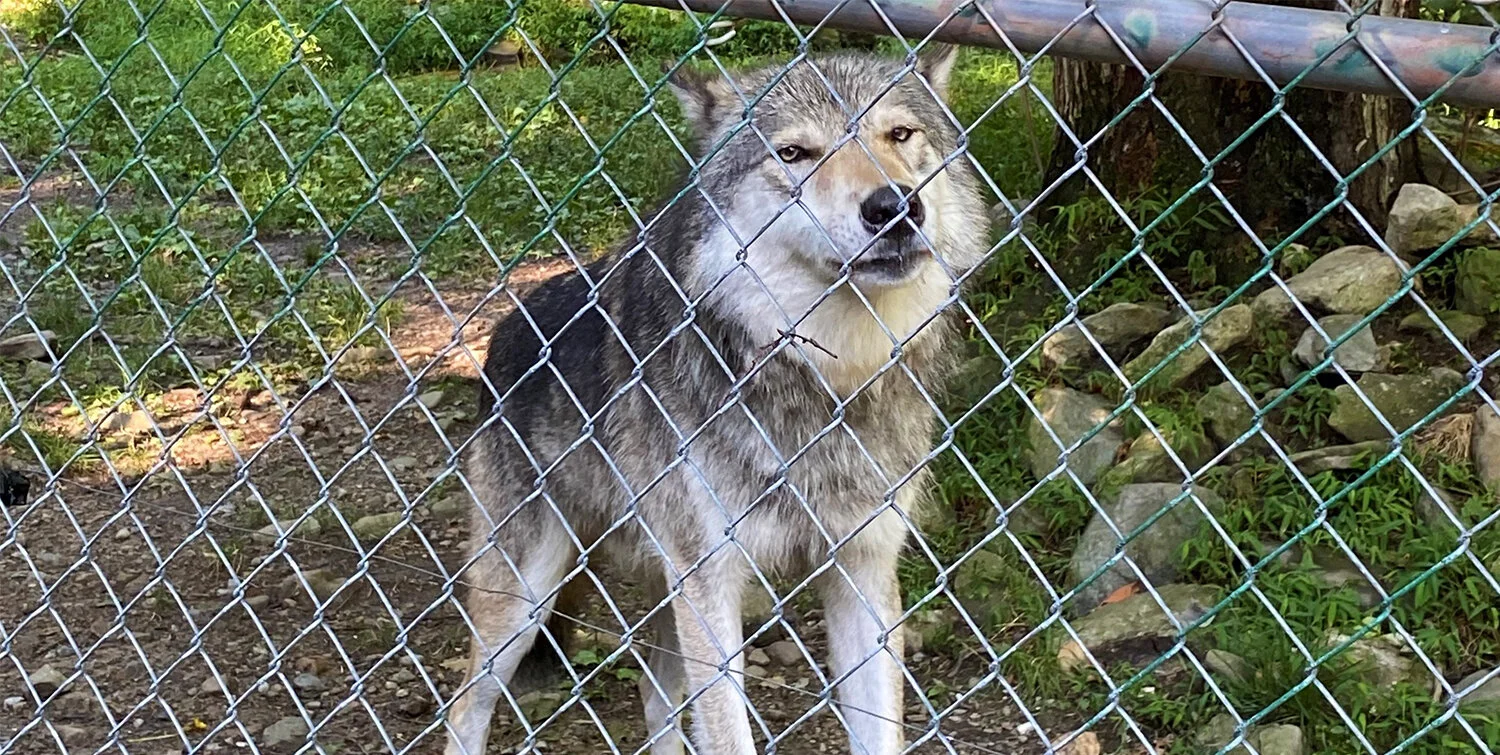Friends of Wolves at the Lakota Wolf Preserve
Friends of Wolves at the Lakota Wolf Preserve
Written by Kristine Manganelli (Somerset County 4-H Coordinator)
Arctic Wolf
There’s nothing like sleeping in the woods, feeling the breeze come through your tent, and hearing the birds chirp you awake in the morning. This past weekend I was finally able to go camping in the Delaware Water Gap area of New Jersey. Serendipitously, the Lakota Wolf Preserve happened to be located on the campground. I signed up for an educational “Wolf Watch” tour and instantly fell in love with these animals that I had never seen up close in person.
Lakota is a Native American word meaning “friend” or “alliance of friends” which is a fitting description for Lakota Wolf Preserve owners Jim Stein and Becky Mace. Considered members of the pack, they have raised each of the wolves since cubs. When they enter the fenced off areas, the wolves run up to greet them like family dogs.
As distant relatives of domesticated dogs, it was interesting to see just how much the wolves acted like pets. They wagged their tails when happy, whined with delight when getting treats, and came up to the fence for a scratch behind the ears. But the enormous size of their paws is the first clue that these are not your household pet, in fact males can reach as large as 145 pounds!
Timber Wolf
It was stressed over and over again that these wolves have the ability to be incredibly dangerous. However, there has never been a human death caused by a wolf in North America. In the wild, wolves will instantly flee with the first whiff of human scent.
The wolves at this preserve have only lived in captivity, meaning they have never lived in the wild. For this reason, the wolves can never be released because compared to their wild relatives, they simply do not have the skills needed to compete with animals used to a wild existence.
Although at one time wolves did roam the woods of New Jersey, they were hunted to near extinction by early settlers. They are now an endangered species and are only living in the state in captivity. There are 3 species of wolves at Lakota: Artic, Timber, and British Columbian wolves. As carnivores (meat eaters), they are fed venison (deer meat), which would be one of their main sources of prey in the wild.
British Columbian Wolves
As social animals, wolves live and hunt in packs or family units. At Lakota each species is separated in large enclosed natural environments. During most visits to the preserve, you will witness the wolves running and playing together. They are highly concerned with social hierarchy and many of their behaviors are based on reinforcing this order, with the dominant male having the most power. In fact, the alpha male is the only wolf allowed to breed with females in the pack.
My favorite part came at the end of the tour. Each wolf is named, and when they were called, they began to howl. Soon, you could hear the howls of wolves far off in the preserve that we didn’t even know were there. Wolves howl to strengthen bonds in the pack, and in the wild to ward off competing wolf packs. This was an experience unlike any other and is delightful for adults and children alike. The preserve also houses a lynx, bobcat, and 2 foxes. It was obvious that all of the animals were happy, healthy, and ready to show off their majestic beauty.
What You Can Do to Help: As Lakota Wolf Preserve relies mainly on donations from visitors, schedule a visit and take a tour. Your ticket fee goes directly to care and upkeep of the animals and the preserve (be sure to call or visit their website in advance as extra social distancing restrictions are in place during COVID). You can also sponsor one of the animals to help with costs of feeding, medical, and other needs.
Get Outside! Since wolves are endangered in New Jersey, they are unlikely to be seen in the wild. Discover other species of plants and animals that are in your backyard with this Nature Scavenger Hunt.
Sources:
Lakota Wolf Preserve. Accessed 27 Aug. 2020.
“Gray Wolf.” The National Wildlife Federation. Accessed 27 Aug. 2020.



